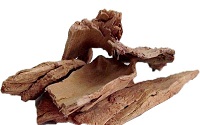As per Ayurveda Wholesome food (Hitaharam) and adequate exercise
(Mitayasam)
are like Aswini devas (twin gods of health). One who follows
these two will never have to depend on a Physician (Vaidya)-for he will be
free from diseases.
Ayurveda explains the Ahara Vidhi or food protocol which a
common man should observe while taking food. Significance of daily exercise is
also added herewith.
Wholesome food
- Ayurveda advices the use of readily prepared, hot food which is prepared out of fresh ingredients. I think, this may sound quite impractical in today's era of frozen, reheated, junk and fast food. But you can reduce the incidence of common digestive problems such as hyperacidity, ulcers as well as many lifestyle disorders by avoiding such meals.
- Use only healthy edible oils. Trans fat are the worst when compared to saturated fats. Trans fats like vanaspathi ghee are widely used in fast food.
- One should eat specific quantity food i.e. , under eating and over eating should be avoided. Modern day’s calorie scale can be used as a parameter in this case.
- Eat your next meal only when previous meal is digested.
- Eat food which is completely compatible. One should not mix food of extreme qualities. eg; use of meat with milk.
- Dining should be in a pleasant atmosphere. Before starting meals set all sufficient utensils around.
- Avoid eating very fast and very slow. Both affect digestive process adversely.
- While eating talking and laughing should be avoided. Presence of mind is always needed while having meals. Ingestion of gas or aspiration of food particles, water or saliva into the respiratory passage may result. Watching TV, reading books or concentrating on smart phone or computer screen would distract your mind from various aspects of food.
- Always take food that is conducive to one’s own health. Eg: if you are a diabetes patient you should avoid excess carbohydrates from your diet.
Exercise
Exercise is mentioned as an integral part of Dinacarya or
daily routine.
Proper Exercise Provides:
• Lightness
to the body
• Ability
to do hard work.
• Improves
digestive power.
• Depletion
of excess fat.
• Stable
and distinct physique.
For healthy people it should be executed with half their strength
and for weaker people like too young or old, milder exercise should be selected.
Healthy exercise can be brisk walk, jogging, practicing yoga,
gardening, and games or playing with kids or pets.
In the context of diabetes treatment, it is said that the
patient should walk without using umbrella and footwear for miles. Anyways for
a normal individual mild exercise, that too daily would be enough.
Let us see what the modern research says about healthy eating habits later.










